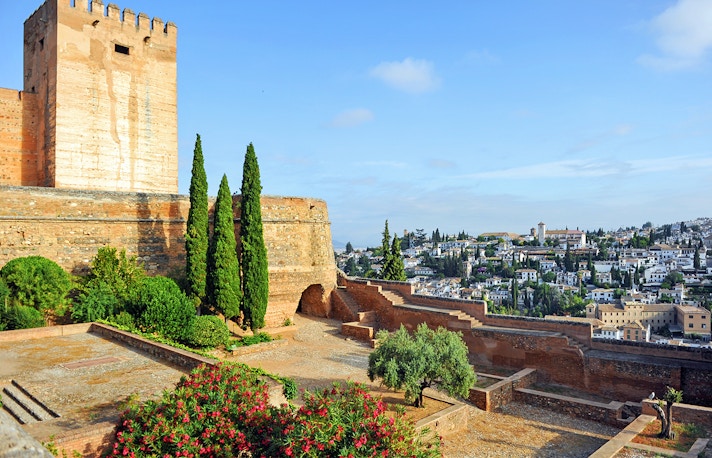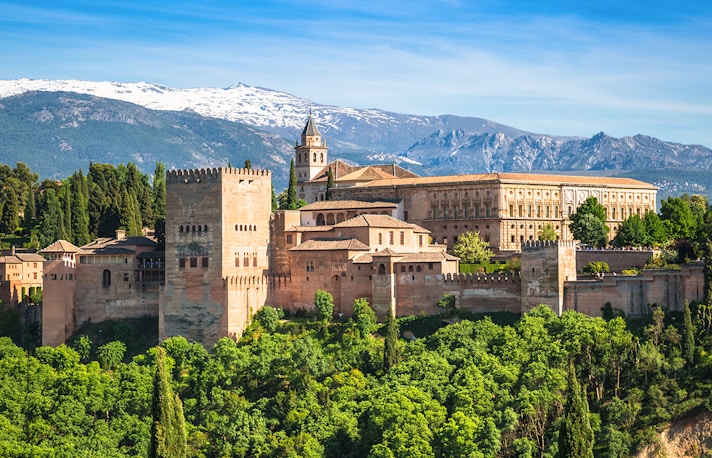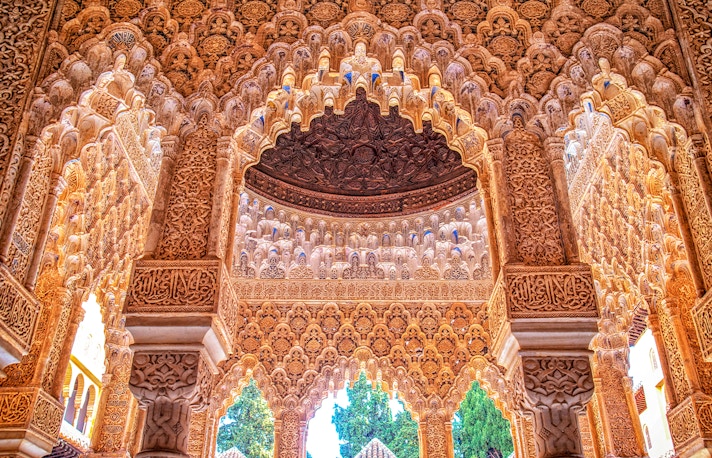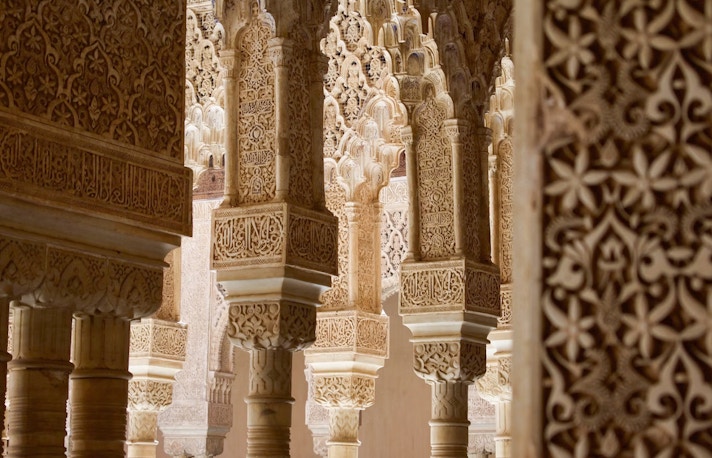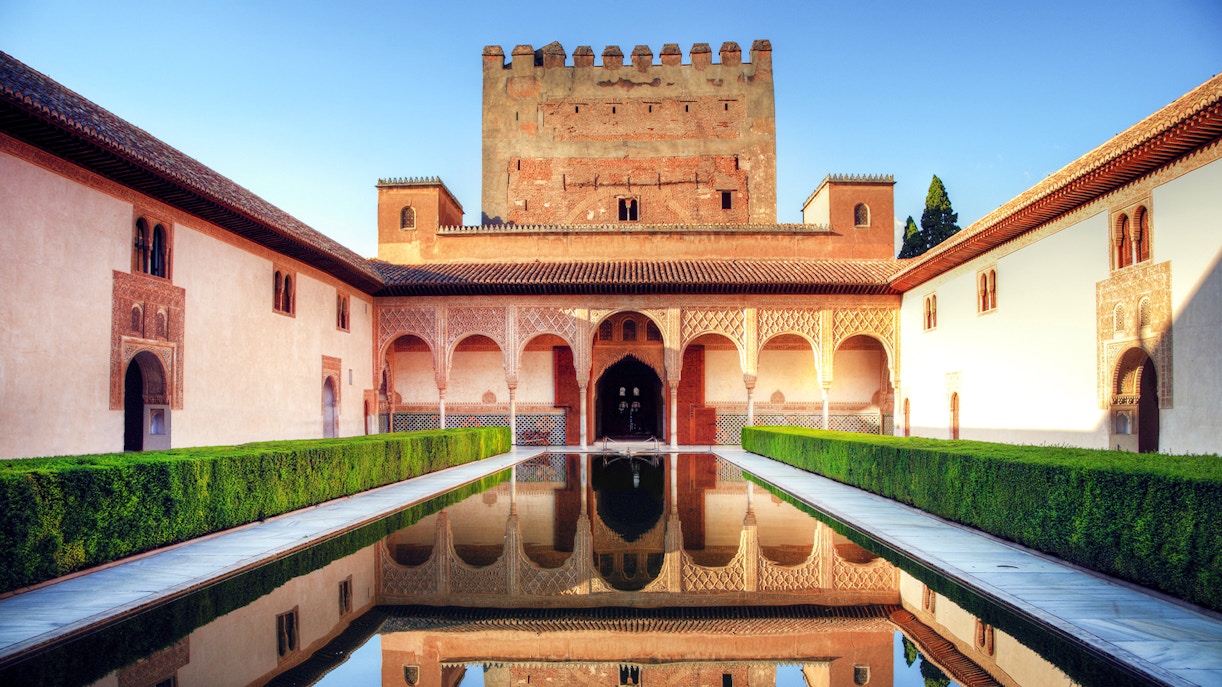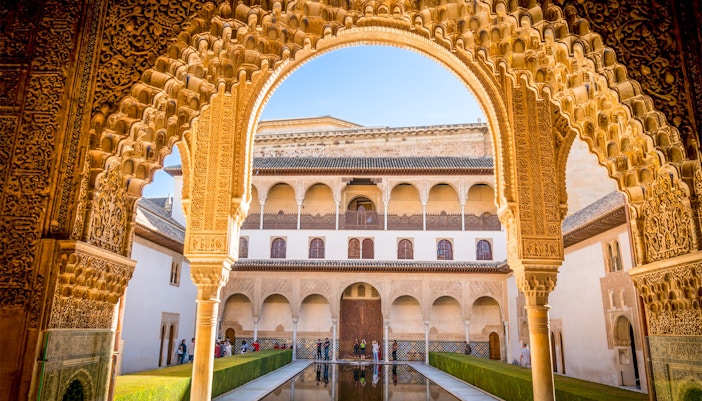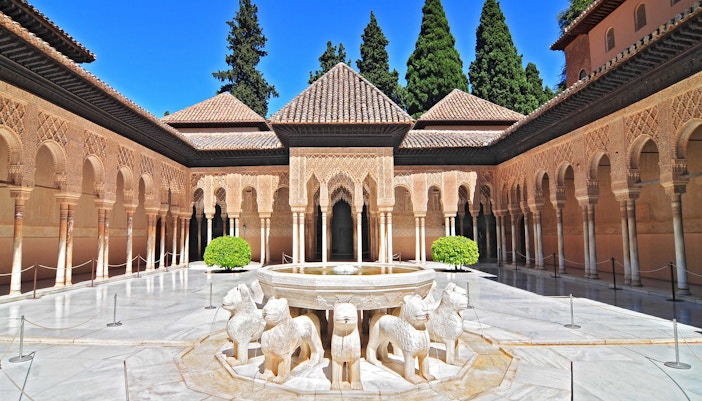The Alhambra is a great example of Moorish architecture and culture. Its intricate palaces, lush gardens, and ornate courtyards showcase the pinnacle of Nasrid artistry. As a UNESCO World Heritage Site, it not only adds to the cultural tapestry of Granada, Spain but also serves as a symbol of the city's multicultural heritage. A must-visit attraction, the Alhambra invites travelers to marvel at its timeless beauty, immerse themselves in its storied past, and experience the enchanting blend of Islamic and Renaissance influences.
Alhambra history explained
Early History
Archaeological evidence suggests foundations on Sabika hill. By the 9th century, a fortress, likely of Visigothic origin, occupied the hill. The term "Qal‘at al-Ḥamra" emerged during conflicts between Arabs and Muladies. In the 11th century, the Zirids established the Taifa of Granada, constructing the al-Qaṣaba al-Qadīma citadel and palace, which later formed the base for the Alcazaba of the Alhambra. Jewish administrator Samuel ha-Nagid built a palace on Sabika hill.
Nasrid Period
The Nasrid dynasty established the Emirate of Granada. In 1238, Ibn al-Ahmar constructed the Alhambra as a fresh residence and citadel. Over time, it evolved into a palatine city, complete with an irrigation system. Subsequent Nasrid rulers enhanced and adjusted the complex with additional palaces and structures. The reign of Muhammad V represented the zenith of Nasrid culture and architectural achievement.
Christian Spanish Period
In 1492, the Catholic Monarchs took control, converting the Alhambra into a royal palace. Christian rulers made additions and alterations, including Charles V's construction of the Palace of Charles V in Renaissance style. The Tendilla family governed the Alhambra until Philip V confiscated their properties in 1717. The site suffered neglect and damage during French occupation (1810-1812) and an earthquake in 1821.
Modern Restorations
Restoration efforts commenced in 1828 under architect José Contreras. Washington Irving's "Tales of the Alhambra" spurred international interest in the 1830s. The Contreras family oversaw restorations until 1907, favoring a "stylistic restoration" approach. The Alhambra was declared a National Monument of Spain in 1870, with ongoing research and restoration efforts continuing into the 21st century.
